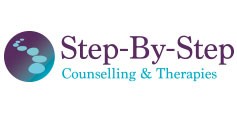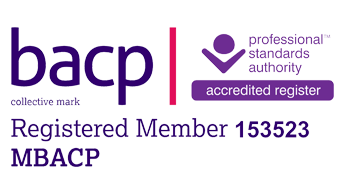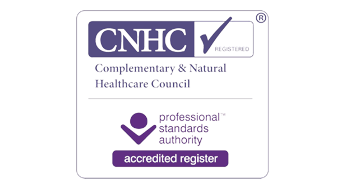Online therapy or face-to-face sessions?
14th June 2021

The pandemic has forced us all to consider different ways of working. Face-to-face, telephone and online therapy have always been options at Step-By-Step Counselling & Therapies, but during lockdown restrictions the only safe option was remote working.
Since the pandemic it's apparent that some clients prefer face-to-face therapy sessions, but many still wish to continue online support. I’m referring to online therapy where client and therapist can still see and communicate with each other using such platforms as Zoom, Skype, FaceTime or WhatsApp Video Call etc and not live-chat/message/email platforms.
So, what are the advantages and disadvantages of online therapy compared to face-to-face sessions?
Online Therapy
Some advantages:
- Easy accessibility - therapy can be accessed without having to leave home or the office, enabling people to access therapy in remote areas, to fit therapy into busy schedules and reduce travel time and costs. It can also be a lifeline for those with mobility issues/disabilities and often suits the younger generation who may be more comfortable and familiar with this type of modality.
- Health and hygiene negated risk - any potential risk of spreading and contracting virus/bacterial infections from therapy sessions is removed when conducting therapy online.
- Effective for those with phobias or severe anxiety - often people experiencing high levels of anxiety or phobias such as agoraphobia can find online therapy their preferred option of support. Talking to a therapist from their ‘safe place’ may enable an anxious client to relax enough to utilise therapy and of course help reduce travel and social anxiety levels. This may be the only option available to those with severe anxiety disorders or phobias.
- Helps remove therapy stigma - a client can receive therapy in their ‘safe place’ without having to maybe organise transport, divulge to others about accessing therapy, be seen entering a therapy centre or sit in their waiting room. This offers a certain degree of anonymity, which may enable some to reach out for support where they may never have if they had to receive support through their GP or therapy centre.
- Ethical and confidentiality boundaries can still be maintained - therapeutic contracts can be sent to clients electronically prior to the session, to be signed and returned, therapy notes and records can still be kept in the same way as if face-to-face. I do, however, consider whether any electronic methods can be 100% guaranteed as confidential and safe, so this is something that the client and therapist must bear in mind.
- Data Protection - again, data protection regulations can still be maintained. Here is an extract from ICO regarding Skype therapy, for example:
“The ICO’s official position on this is that the Data Protection Act 1998 (DPA) would not prevent the use of Skype for online Counselling. The DPA requires the data controller to consider the security implications with such use and then implement measures to ensure the information is appropriately secure.
“In addition to this we would expect you to ensure that the individuals who could potentially use this service is made fully aware of how you will use the service i.e. what is likely to be discussed, what if anything will be held as a result of use along with any security implications. If the individual consents to the use of Skype for the purpose of online counselling after being given the relevant fair processing, you would be able to go ahead with such use.”
- Online therapy can be a useful alternative, in between face-to-face therapy. Sometimes, having a session online in between face-to-face sessions can enable continuity of support, should the client be unable to attend in person.
Some disadvantages:
- Verbal and non-verbal cues - face-to-face therapy enables client and therapist to get a sense of verbal and non-verbal cues, gestures, body language and emotions in the room. Therapy online via video/web links offers ‘an almost real experience’ but is not quite the same as being present in the room together. However, it is considered that this disadvantage can be ‘accepted’ considering advantages above and if both client and therapist are happy with this form of therapy.
- Confidentiality and security - as explained above, I consider that a professional therapist can provide effective therapy online following the same confidentiality boundaries as in face-to-face sessions and using ‘secure’ electronic platforms. However, I do question whether anything online can be 100% secure. Of course, a therapist cannot guarantee the confidentiality of the client’s space - it is advisable for the client to access therapy using headphones, to limit the risk of any third-party hearing conversations. Therapists should ensure their space is confidential, but if unsure use headphones too.
- Client and therapist therapy activities can be more difficult to do online - for example, working with choosing emotion cards, therapy buttons or using expressive drawing can be an issue when working online. However, a professional therapist can use other techniques to work around this and lots of information can be shared with clients over online platforms.
- Technology difficulties - with any online platform, there can be breaks in communication, compromised picture quality and ‘lagging’. Again, this is something both client and therapist should consider. A therapists or client’s lack of technical knowledge can also prove to be a challenging barrier. An alternative form of communication, for example by telephone, should be agreed by client and therapist if online communication keeps failing; thus, ensuring the client isn’t just left mid-session.
- Crisis situations - with this form of therapy, the therapist is not ‘on-hand’ in the room to deal with any client crisis or abreactions. Again, this is something for both parties to consider - maybe the client would be happy having a family member on call or in the vicinity should they need support.
Face-to-face Therapy:
Sometimes, being in another’s presence is the only support to consider. Working virtually can be ‘almost as effective’, but will never replace the sense, feeling and comfort gained from working together in the therapy space.
I don’t consider there to be ‘any disadvantages’ of in person therapy. However, we should consider health and hygiene risks with face-to-face therapy:
- Exposure risk - clients should consider health and hygiene risks when using public transport to access therapy and indeed attending the therapy space where previous clients have been. The therapist also needs to consider the risk of exposure for both parties.
- Face coverings - vulnerable clients may wish to consider wearing a face covering, due to the prolonged exposure in an enclosed space, and whether they feel comfortable experiencing therapy wearing a mask. Therapists need to consider whether this is a ‘barrier’ to therapy, as facial expressions can be missed and speech clarification/misunderstandings are part of the course.
- Room ventilation - sitting in a well-ventilated room helps negate health and hygiene risks - this is fine on a warm day, but can be an issue for both client and therapist during cold spells. Also, confidentiality may be compromised when windows are open.
- Facilities - lots of therapists are still not offering drinks and toilet facilities, which would normally be provided, so again this needs to be taken into account by the client.
So, in conclusion I feel there isn’t a ‘perfect’ way to offer and receive therapy, it is very much a personal choice. Online therapy, where you can ‘see and communicate with each other’, can be as effective as face-to-face therapy and comes with reduced hygiene and health risk. However, face-to-face therapy offers a ‘full therapy experience’, but carries the risks and considerations associated with potential exposure to virus/baterial infection. I feel it comes down to personal choice and each client and therapist must decide which therapy modality they feel the most comfortable with.
I will continue to offer counselling, psychotherapy, CBT, bereavement counselling, EMDR therapy, hypnotherapy and holistic therapies both face-to-face and online, to offer client’s choice and provide an effective therapy service.
So, let’s continue to support each other however we can - together we are stronger!
''Grant me the serenity to accept the things I cannot change, the courage to change the things I can, and the wisdom to know the difference.''
- The Serenity Prayer, Reinhold Niebuhr






